Written by Dorina Graham
31 years ago in July, Sony released its iconic portable audio cassette player. The Walkman changed music culture, allowing people to record, listen and transport music like never before.
Happy Birthday Walkman
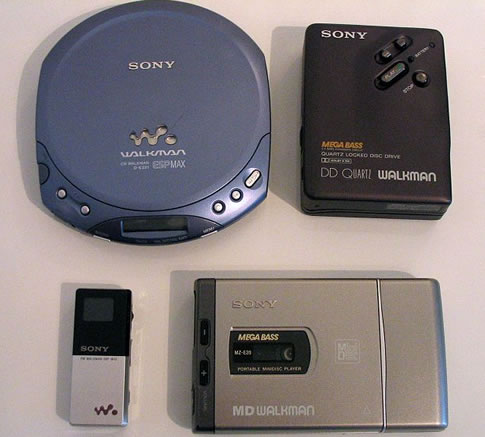
When Sony modified a cassette player and added headphones, the Walkman was born. By 1983, everyone who was anyone had a Walkman. This was a status symbol of cool. Happy Birthday Walkman!

This huge Sports Walkman sits outside an 80s building in Disney World Florida. Believe it or not, it was hip to clip the smaller, portable version to your 80s outfit and be seen in public with a Walkman. Have you seen those workout outfits from the 80s? Now that’s scary.
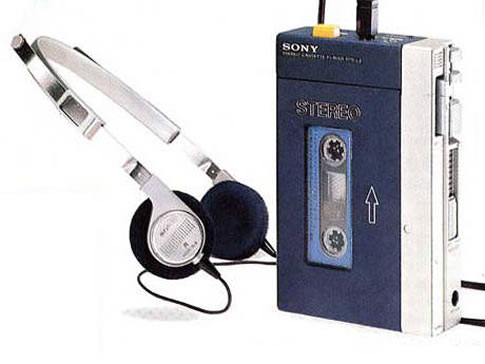
The blue-and-silver Walkman TPS-L2 was the first commercially available Walkman. It went on sale in Japan on July 1, 1979. Sony considered releasing the Walkman in the U.S. under the name Sound-About. For marketing reasons, they kept the name Walkman. It had a $200 price tag which was a great deal of money in 1979.
Sony Walkman Groups

Pictured above are Sony Walkman models: TPS-L2, SRF-30W, SRF-80W with a ‘Portable Stereo Speaker System,’ and WM-3EX. Throughout the years, various improvements were made to these rectangular personal music stereos. Some included a radio. Parents of 80s kids had probably never ripped through so much money for batteries before the Walkman.

These black and silver Sony Walkmans are the WM-R2, WM-7, WM-5, and WM-F2. Sony had celebrities endorsing and using Walkmans. Being “wired” was all-important. At that time, being wired was a status symbol. People took their Walkmans with them just as people now carry their cell phones or MP3 players.

As other companies marketed their version of the Walkman wannabes, Sony began producing their Walkman models as smaller units. Pictured above are the Sony Walkman WM-10, WM-20, WM-F20, WM-F10, and WM-F5. This was considered small, since it was about the size of a cassette tape.

These Walkmans include Sony’s WM-R15, SRF-33W, WM-10II still boxed, WM-10II, and the WM-10RV. The generation gap widened as more and more people latched onto the MTV culture, “Video Killed the Radio Star,” and the Walkman, recording their own mixed tapes and sharing them with friends. At one point, it was considered supremely cool to wear your headphones while banging your head to Autograph’s “Turn Up The Radio.”

Sony WM-F15, WM-DDI, WM-W800, and WM-F70 with box were produced during the height of cassettes. When the cassette tape would pull out, people used pencils or their fingers to quickly twirl the tape back into the safety of the shell. Carrying around extra music and cassettes was like toting small luggage.
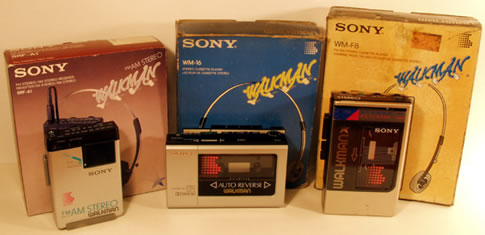
Yet more Walkman models such as Sony SRF-A1, WM-16, and the WM-F8. They may seem big and bulky now, but the Walkman revolutionized the way people could listen to music. It made personalized music choices possible and portable.
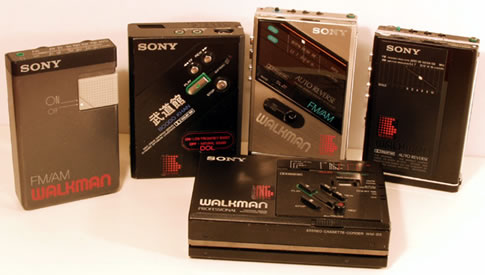
Did you have any idea the Walkman was this wildly popular? It also produced these models: Sony SRF-19W, DD-100 (“Boodo Khan”), WM-D3, WM-F100, and WM-F100III. This obsolete device was once a cultural icon.
Vintage Sony Walkman Ad
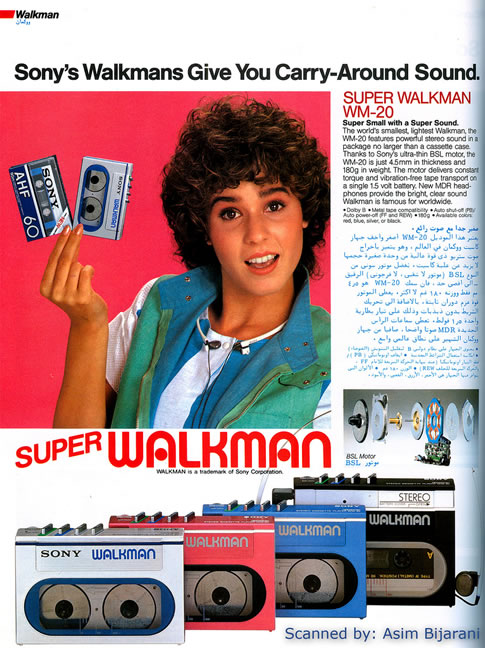
Can you imagine this was considered super small? Not only small, but the “World’s Smallest.” The 80s hairstyle and clothes were rocking for that time too.
Dual Listening
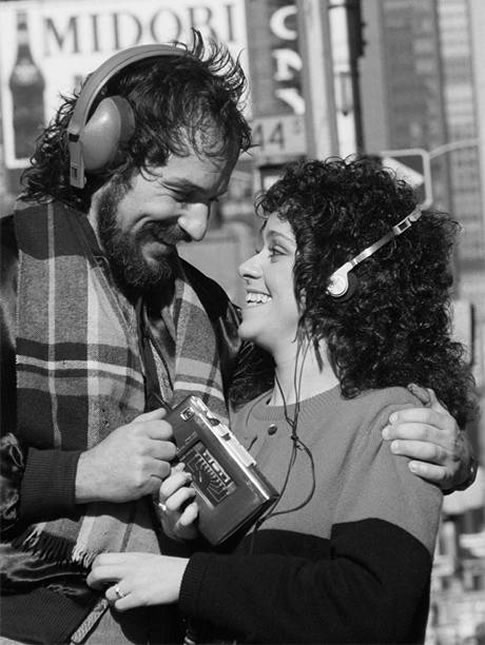
The Walkman UK version had a twin headphone jack for dual listening. There was also a ‘Hotline’ button which would partially override the sound from the cassette to make it easier to hear each other. Sadly, these features were not continued for the next Walkman version.
Sony’s Forward Thinking

The Walkman Double, on the left, featured twin tape decks supporting both playback and recording. It was the only model that featured twin tape decks and the ability to copy a cassette without the use of external equipment. Sony showed off their forward thinking with a Solar Walkman in 1987. The Solar version is rare and costly if you find one posted on an online auction.
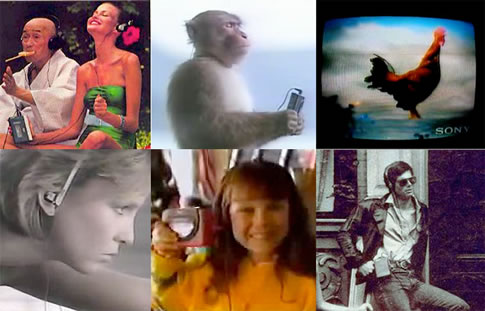
These vintage Sony Walkman ads were for a few of Sony’s offerings. From 1979 until 1999, Sony would celebrate the Walkman’s July 1st birthday by releasing an anniversary model. Each anniversary model carried a different theme yet retained some characteristics of the previous anniversary models. In 2004, Sony released a hard disk based NW-HD1 to signify the death of the compact cassette tape.
RIAA’s Grandfather
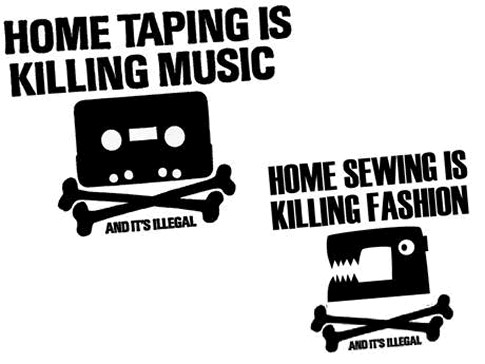
Ah, the grandfather of the RIAA perhaps? This ad proclaimed that home taping was killing music. As you might imagine, the British Phonographic Industry’s (BPI) 1980s slogan for its anti-copyright campaign quickly became a parody. The Walkman, home taping, and cassette culture ruled the 1980s.
Bonus:iPhone Testing
